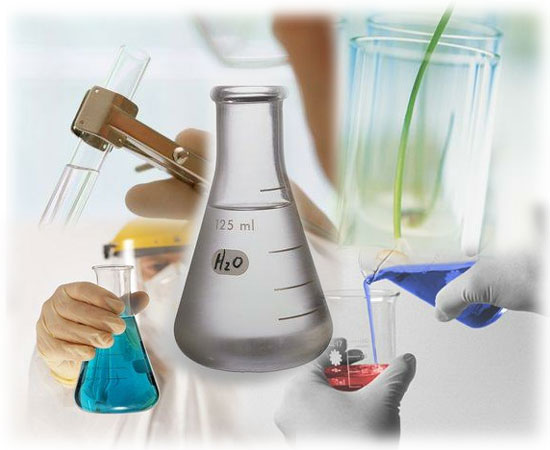 |
CHEMISTRY Pre-AP Unit 11: States of Matter |
 |
Goal: The student should be able to:
1. Recognize and/or interpret the meaning of the five basic assumptions of the kinetic molecular theory.
2. Explain the relationship between mass, velocity and kinetic energy.
3. Describe what is meant by absolute zero and recognize its value both in the Kelvin and Celsius scales and convert Kelvin to Celsius degrees and vice versa.
4. Indicate what factors affect the number of collisions between molecules of a substance.
5. Recognize what causes gas pressure in a closed container and what is meant by atmospheric pressure.
6. Identify the use of a barometer and manometer.
7. Recognize the units of standard pressure and convert from kPa to mm Hg to atm.
8. State Dalton's Law of Partial Pressures and apply it in working problems in which the percentage composition of a mixture of gases is known.
9. State what information can be derived from Graham's Law of Effusion.
10. Distinguish between intramolecular bonds and intermolecular attractions.
11. Indicate what intermolecular attractions may exist and how they will affect the properties of the substances in which they occur.
12. Distinguish between the four states of matter based upon their kinetic energy and movement.
13. Explain surface tension, viscosity, and capillary action in liquids.
14. Recognize at what temperature water is most dense and explain why.
15. Define crystal and identify the seven crystal systems.
16. Recognize what the simplest repeating unit of a crystal is called and that unit cells have various shapes that determine the shape of the overall crystal.
17. Indicate what affect the amorphous arrangement within some solids has upon the melting point of that solid.
18. Describe the properties of macromolecules that result from the network covalent bonding in them.
19. Describe, in general, what occurs to the kinetic energy of and attractions between particles of a substance as it passes from one phase to another.
20. Recognize that the vapor pressure of a substance directly depends on the absolute temperature.
21. Define the melting and boiling points of a substance in terms of pressure and terms of which phases are involved.
22. Recognize the relationship between freezing and melting points and between boiling and condensation points.
23. Describe the process of sublimation.
24. Distinguish between the processes of boiling and evaporation.
25. Distinguish between volatile and nonvolatile substances.
26. Define critical temperature and critical pressure and relate these to the strengths of attractions between molecules.
27. Interpret a phase diagram for any substance including locating the triple point and describing its significance.
Activities:
February 14 : Discuss Unit X Test, Lecture Kinetic Molecular Model
February 21: Quiz; Lecture Gases, Dalton's Law
February 22: Lecture Forces of Attraction
February 23: Kinetic Theory; Demonstrations
February 26: Quiz; Lecture Liquids and Solids
February 27: Lab: Melting and Freezing Points
February 28: Lecture Phase Changes
March 1: Review for Unit XI Test, Objectives Due
March 2: Unit XI Test
Homework:
February 14: Begin Chapter 13 Study Guide, Due Feb 26
February 20: Study for Quiz, Chapter 13 + Lecture
February 21: Work on Chapter 13 Study Guide
February 22: Work on Chapter 13 Study Guide
February 23: Write up Kinetic Theory Demonstrations due February 27
February 25: Study for Quiz
February 26: Prelab Melting and Freezing Points
February 27: Work on Lab report due March 5
February 28: Finish Chapter 13 Study Guide, Objectives
March 1: Study for test
March 4 : Finish lab report
Lecture & Lab Materials (uploaded once per week):
BHT Data (Right Click with your mouse and choose "Save Link as"; then choose a location to save to. This is a Graphical Analysis file)